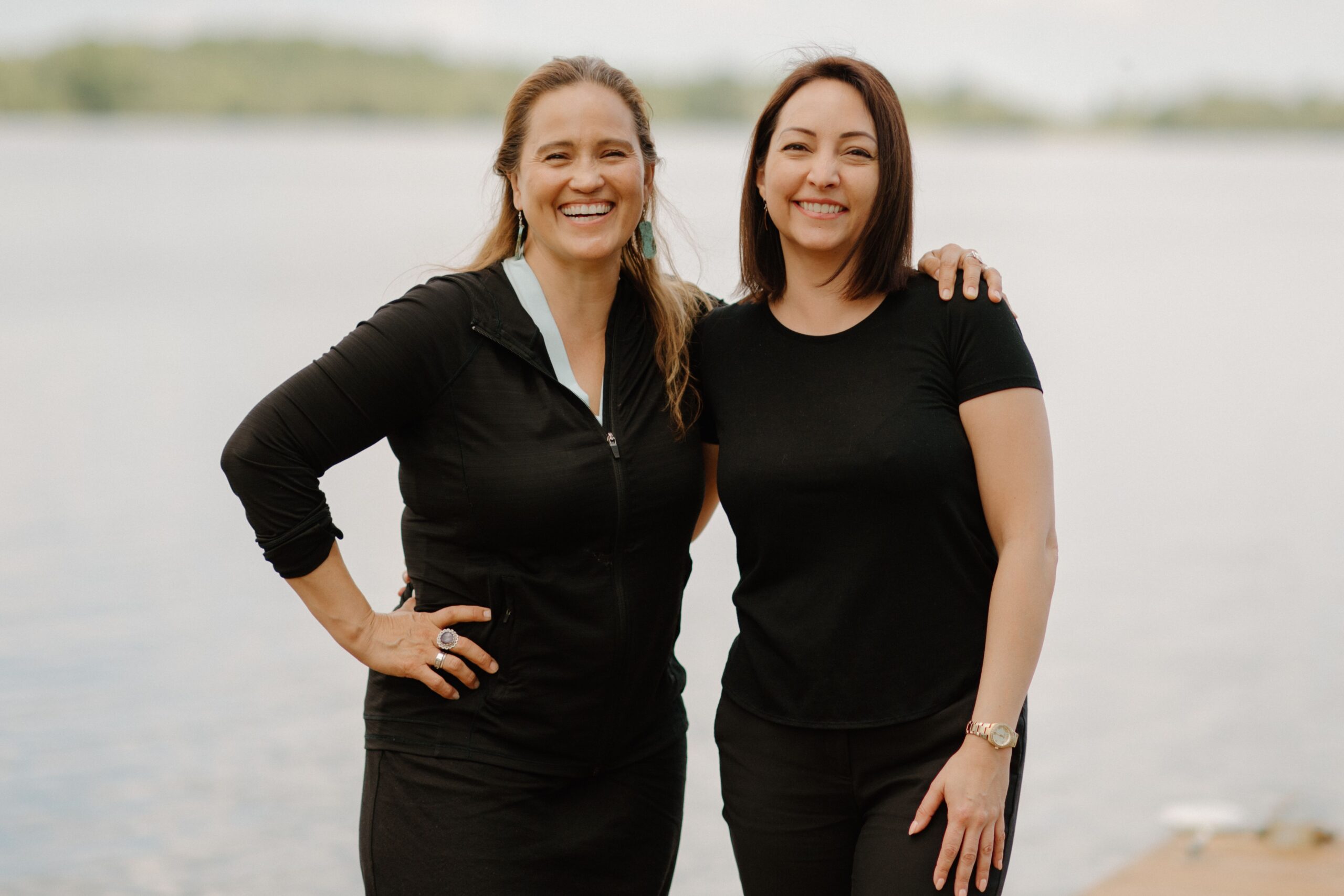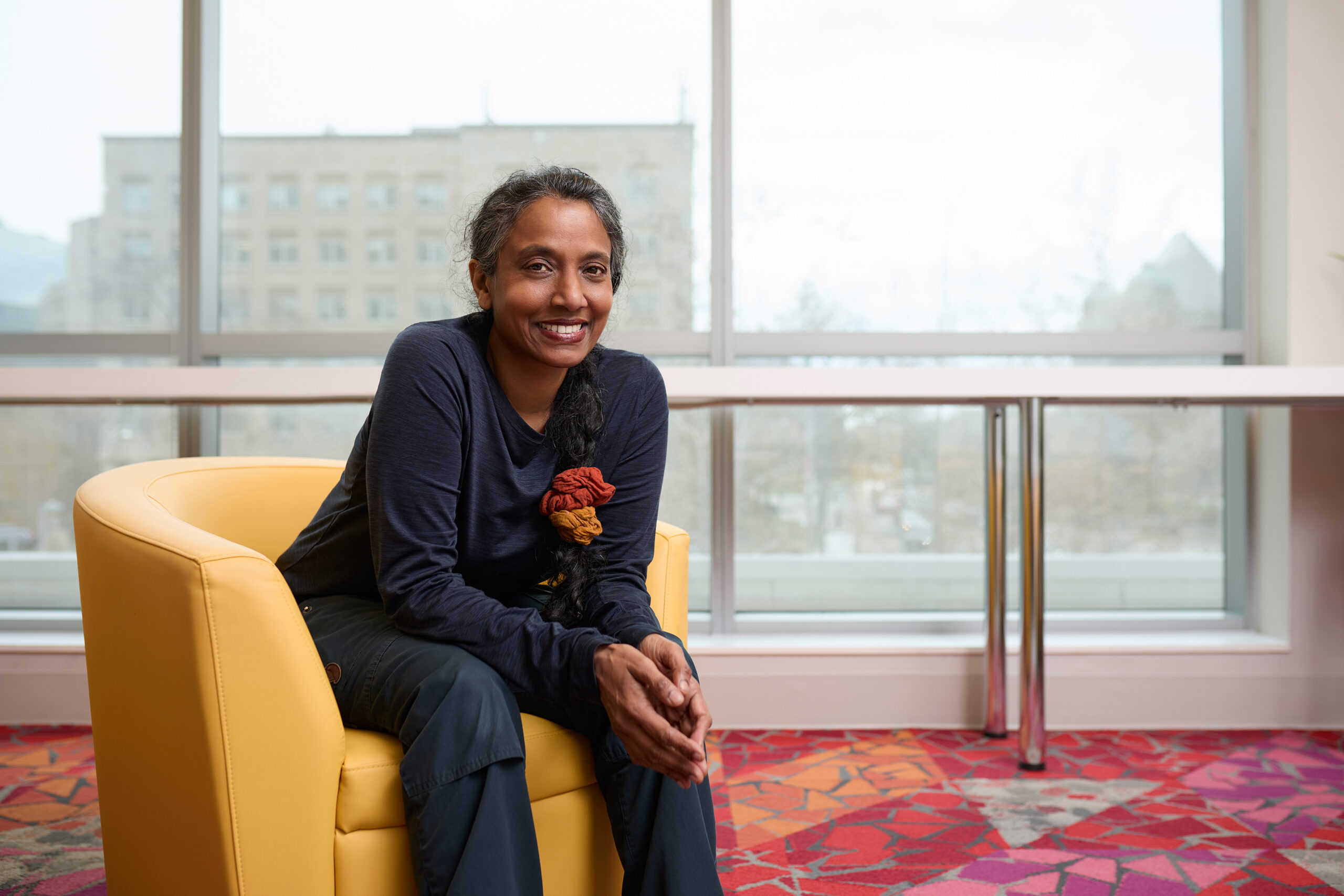New SCOPE program brings specialist care to the Akwesasne Mohawk Reserve

Left to right: Dr. Ojistoh Horn and Telena Shena on the banks of the St. Lawrence River in Akwesasne
New SCOPE program brings specialist care to the Akwesasne Mohawk Reserve

Left to right: Dr. Ojistoh Horn and Telena Shena on the banks of the St. Lawrence River in Akwesasne
Nestled on the borders of Ontario, Quebec and New York State and spanning the width of the St. Lawrence River, the Akwesasne Mohawk Reserve traverses from land to island to land, showcasing a unique and rural community filled with trees and connected waterways, spanning deep into the Adirondacks. The people here have flourished since time immemorial.
But in the 1950s, the construction of a hydroelectric dam on the St. Lawrence River saw the region flooded with large-scale developers looking to take advantage of cheap hydroelectricity. Six large factories surrounded the reserve, including aluminum and textile factories, a vehicle assembly plant, a chemical plant, and a paper and pulp manufacturer. In this time of poor environmental protection, many chemicals were put into the air, water and soil, including Polychlorinated Biphenyls (PCBs). This highly carcinogenic chemical compound is toxic to both people and the environment.
Despite the raising of alarms and advocacy by Mohawk community members, the land soon became too polluted to farm, hunt, fish or pick medicines. Families were forced to stop using well water, and Mohawk cattle farms were decimated by fluoride poisoning. Contaminated waterways saw fish filled with PCBs and mercury, forcing fishermen to leave the river. Anglers who would travel from across the continent halted work in the region, creating a vacuum in the once-active local economy. An advisory would later be placed on how to safely eat fish – an advisory that still exists today.
“One of the most important things that people don't understand about Indigenous people is that we are where we've been for a millennium,” says Dr. Ojistoh Horn, a primary care physician working in the community. “This is our home and we have strong powers of observation about the lands that we live on.”

Dr. Horn standing outside the Akwesasne medical clinic
It wouldn’t be until 1979 that both the Canadian and the United States governments banned PCBs for good – but the damage to Akwesasne had already been done.
“We are only as healthy as our environment, and with a history of mass industrialization and little to no regulations safeguarding our land, our environment has become very unhealthy,” says Dr. Horn. “The result is long-standing PCB exposure in our community leading to cancers in younger people, inflammatory disorders like autoimmune disease, endocrine disorders like thyroid and diabetic problems, and mental health disorders, such as depression and anxiety. The profound effects of PCBs on the health of the people of Akwesasne is alarming.”
With the closest specialists located hours away, it is difficult for residents to access the comprehensive care necessary to manage the long-term effects of environmental poisoning. There is an urgent need for local access to specialized healthcare services – but like many rural Indigenous communities, the infrastructure to support these visiting healthcare practitioners was non-existent.
“I realized there was a dire need for specialist care when speaking with Dr. Horn, who has lived and worked on the reserve for over nine years,” says Dr. Suvendrini Lena, a neurologist at the Centre for Headache at Women’s College Hospital. “SCOPE is a program dedicated to supporting primary care providers by connecting them to real-time supports when they need it most. That’s why I, along with Dr. Lisa Richardson, the strategic lead in Indigenous health at Women’s College Hospital, appealed to them for funding to get Dr. Horn the help she needs.”

Dr. Suvendrini Lena in the Ganawishkadawe-Centre for Wise Practices' Gathering Place at WCH
With that, the Akwesasne SCOPE Program was born and began its partnership with the Ganawishkadawe-Centre for Wise Practices in Indigenous Health (GCWP-IH) at WCH – a clinic designed to support Indigenous patients both at the hospital and beyond. The Akwesasne SCOPE Program aims to transform healthcare access in the area by bolstering primary and specialist services in neurology, endocrinology, rheumatology, and psychiatry while emphasizing mentorship and cultural sensitivity towards the Mohawk community.
“This program is an opportunity to pilot a model of care in which specialist consultants can see patients in remote and rural areas of high need, and support infrastructure for preventive and primary care in communities like Akwesasne,” says Dr. Richardson. “Dr. Lena already works with the GCWP-IH as the environmental justice lead, but to ensure we were improving care in the community, for the community, by the community, we also brought in Telena Shena to be the program’s lead.”
In collaboration with Dr. Horn, Telena establishes support structures and partnerships essential for the program's success, including specialist recruitment and care and a mobile primary care unit funded by the SCOPE grant. As the Akwesasne SCOPE program lead and the manager of operations for the CGWP-IH at WCH, Telena’s connections with community organizations have proven invaluable in building and maintaining trust between healthcare bodies and Indigenous communities.

Telena Shena working in the Akwesasne medical clinic. She is installing an AI program designed to improve patient visits
“Building relationships with Indigenous partners, including Anishinaabe Health Toronto, the Mohawk Council of Akwesasne and partner specialists has been crucial to the development of our mobile primary care unit,” says Telena. “It’s important to slowly build that trust with Indigenous communities and leaders. In doing so, we have been able to navigate issues of Indigenous data sovereignty, knowledge translation and community-based equitable approaches while emphasizing the importance of respecting Indigenous knowledge and practices.”
The Akwesasne SCOPE program has already made significant strides. A part-time physician assistant has been recruited, and plans are underway to support the primary healthcare clinic with additional nursing and administrative support. As new challenges arise, the program is also providing flexibility to solve care management issues in an incredibly complicated environment.
“There are complex environmental, jurisdictional and logistical issues all at play here in Akwesasne,” says Dr. Horn. “We try something, it doesn't work. We try something else, it doesn't work, but we're getting better at understanding.”
With an eye on the future, the program endeavours to expand its work with more specialized care for the people of Akwesasne through an individualized mobile clinic designed specifically for the community with more specialized care touchpoints throughout the year.
“This project and WCH are slowly and effectively building a culturally safe relationship between health institutions and the Indigenous community,” says Telena. When healthcare initiatives are Indigenous-led with strong, dedicated allies, programs like these are massive for reconciliation in healthcare in this country—we move at the speed of trust.”

Left to Right: Kawennanoron Cynthia White, Christine Monague, Danielle Migwans, Symone Peltier and Jared McElroy-Walker

Left to Right: Kawennanoron Cynthia White, Christine Monague, Danielle Migwans, Symone Peltier and Jared McElroy-Walker
This past National Indigenous Peoples Day (June 21), the sun beamed vibrantly as the Ganawishkadawe-Centre for Wise Practices in Indigenous Health (GCWP-IH) celebrated the opening of its rooftop medicine garden at Women’s College Hospital (WCH). By growing and harvesting medicines used for the spiritual well-being of First Nations, Inuit or Métis (FNIM) community members, the GCWP-IH can offer a new model of care for its patients.